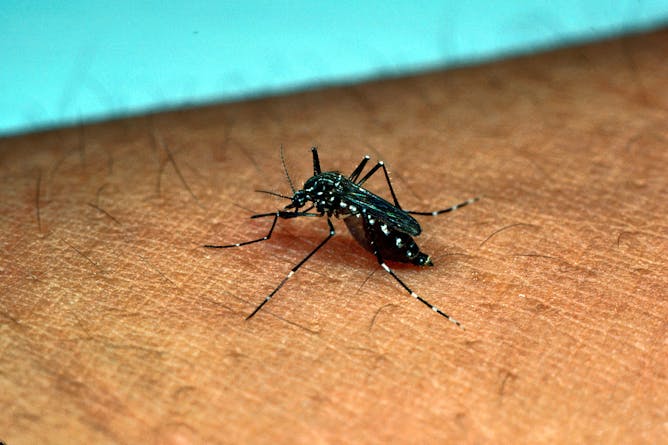|
The Aedes aegypti is a black mosquito with white spots that only bites during the day. Females of this species transmit two related diseases, the chikungunya and dengue viruses, which have become more common in Kenya in recent years. Now scientists have discovered what's attracting disease-bearing mosquitoes to specific people. The secret, writes Eunice Anyango Owino, lies in body odour.
Many believe that an ongoing and often bloody conflict between nomadic herdsmen and indigenous farmers in Nigeria is motivated by religion and ethnicity. The farmers are mostly Christian, the herdsmen are largely Fulanis, a primarily Muslim people scattered throughout West Africa. But, says Olalekan Adekola, there's an environmental perspective that gets lost in these narratives: the groups are competing for increasingly scarce resources like water and pasture for their cattle.
|

Flickr/AFPMB
Eunice Anyango Owino, University of Nairobi
In the future, traps for mosquito that spread the dengue and chikungunya virus could be made from the carbon dioxide in human breathe as well as body odour.
|

roseshutterstock25 / shutterstock
Olalekan Adekola, York St John University
Talk of ethnic and religious conflict between Muslim Fulani herders and local Christian farmers misses the full picture – this is about resources.
|
Arts + Culture
|
-
Elmien du Plessis, North-West University
In a society like South Africa's that is increasingly becoming polarised, simplified opinions should be approached with caution.
|
|
Education
|
-
Sharon Fonn, University of the Witwatersrand
If researchers want to make an impact on public health they can't just have a thorough grounding in their own discipline.
|
|
Environment + Energy
|
-
Peter Johnston, University of Cape Town
In periods of water stress, farmers need support, research assistance and empathy from governments and competing water users.
|
|
Business + Economy
|
-
Muneer Hassan, University of Johannesburg
A revenue shortfall of about R50 billion has pushed the South African government to hike Value Added Tax (VAT) among other taxes.
|
|
From our international editions
|
-
Tracey J Dickson, University of Canberra
Future Olympics will be required to report on their legacies for up to five years after the event under the IOC’s new framework.
-
Chris Standish, University of Southampton; Alistair Pike, University of Southampton
Neanderthals, rather than modern humans, created the world's oldest cave paintings.
|
|